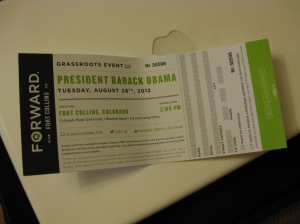The most important thing to remember when redecorating (or decorating for the first time) is that your style is more sustainable than whatever the current trend is. Focus on what you like and dislike and find furniture (see part one), textiles and decorative objects to fit your niche. Think about your style, do you prefer mid-century modern, girly antique, breezy beach cottage, or something else?
De-clutter Your Life
Alright, in my experience the best decorating strategy is to start by cutting out all the clutter in your life. This extremely freeing (when I get on a roll sorting into the trash, recyclable, give-away and sell piles I just feel like the queen of the world), but what's more is accumulating a bunch of junk you don't need is an unsustainable habit.I know it's time to clean out when magazines are piling up on the floor, mail on the table, laundry goes undone, clean clothes remain on the floor... I think I'll stop listing things now since I am beginning to sound like a major slob.
MAGAZINES
Only keep subscriptions to those publications, which you read regularly and would miss if they did not arrive each month. Not only do they take up space but if you aren't reading the magazine it's a waste of paper.
BILLS
Opt for e-bills to pay online. Saves paper and cuts the clutter.
JUNK MAIL
A year's worth of junk mail slays over one million trees, wastes 28 billion gallons of water and uses as much CO2 as 2.8 million cars. 41 Pounds is a service, which removes you from junk mailing lists for five years.
Things to keep around
STORAGE
Now that you've removed the clutter you need a place to store the stuff you DO want to keep. I made a couple of storage containers out of old shoe boxes. I don't know why but I can't stand to get rid of shoe boxes, they are so sturdy it just seems a waste. I was using them to store things hidden in my closet (because they aren't very attractive) but I found a pin on pinterest, which showed me the light. Here are my results:I can post a tutorial on how to make these boxes (no sewing). Check out my poor sickly plant: that was a just because gift from boyfriend (aww). I just replanted it from the plastic container it came in into a big boy pot. It's not adjusting well.
Toss the things you don't need, hide the things you don't want to see, and as for the rest? Continue reading; there's no need to keep every surface in your home totally barren.
PLANTS
Plants are my favorite things in the world; I prefer to live in a jungle home with every surface (including the floor) supporting a pot with a plant of some kind. I think they are so pretty AND they can eliminate toxins from the air. Here is a list of beautiful plants and the toxins which they remove.
http://www.houseofplants.co.uk/Collections_freshair.htm
- Gerbera daisies (reduce formaldehyde levels)
- Chrysanthemums (reduce benzene and trichloroethylene levels)
- Orchids (reduce xylene and toluene levels)
- English ivy (reduces benzene levels)
- Bamboo (reduces formaldehyde levels)
- Butterfly palm (replaces your humidifier)
- Rubber plant (reduces formaldehyde levels, can be toxic to pets)
- Peace lily
- Heartleaf or elephant ear philodendron
CANDLES
I love candles. They smell lovely and create ambient light. As long as you use candles made from soy or beeswax they are also eco-friendly. Make sure to keep these around.
http://www.organic-fair-trade.com/Beehive-Glass-Beeswax-Candle.html
Soy wax burns cleaner, lasts longer, holds more fragrance, contain no toxic chemicals or carcinogens, and are all-natural (when no non-natural fragrance or color is added). Beeswax candles are naturally scented with honey and smell sensational. Look for sustainable brands because the bees need the wax to lay eggs in and store honey so we don't want to exploit their homes.
REFURBISH
Look at objects in a different light. For example, while shopping at ReSource Yard, a building materials re-purposing company here in Fort Collins, I found an old brick in a pile of other old bricks. Because this particular brick was the only one like it, it was practically useless on its own but check out how I decided to use it.
My wine selection is lacking, but before I had a place to store wine I couldn't buy as much. I've been looking for a unique wine storage unit for a while now. You never know what you'll find, if you look with a creative mind. (Haha rhyming, I give you permission to use that as your personal motto).
WHAT'S IMPORTANT
Say you have a collection of pig figurines. Find a way to display your collection where it's viewable, not in the corner gathering dust. Pig figurines may not be trending in the interior design world but if it's important to you it will make you feel that much more comfortable in your home. Your home should reflect your personal style.
http://www.kaboodle.com/reviews/vintage-pig-figurines-huge-lot-of-collectible-pig-figures
PICTURES and PAINTINGS
I love having pictures of my family and friends all over the house. I also have framed artwork from poster stores, Dustin Hawks (my brother-in-law), magazines (Yoga journal always includes a full page image of some scene in nature. I change these out every month), and even a few flea market purchases.
- Support a local artist to find new art and help your community.
- Look for art at flea markets, garage sales, antique stores and thrift stores.
- Recycle pages from books, magazines, newspapers and turn them into art.
- Frame photographs and hang them artistically, below is a beautifully designed gallery wall:
http://www.homelife.com.au/homes/galleries/decorating+with+craft+,17075?pos=4
FABRICS and TEXTILES
Unless they're organic, the cotton sheets on your bed were probably sprayed with 1.25 pounds of pesticides. Conventionally grown cotton uses 25% of the world's insecticides and 10% of all pesticides. These carcinogens seep into groundwater and contaminate the habitat for fish and other wildlife. Regular cotton sheets are also treated with formaldehyde and some of the colored dyes may contain heavy metals. Now you know why your mom told you to wash your sheets before sleeping in them.
As for cotton-polyester blend sheets, they don't tend to last as long (meaning you have to buy more often... so not green) and are derived from petroleum. So when you're looking for a new set of sheets, be sure to look for the following:
- Organic cotton (or linen, or pesticide-free bamboo)
- Free of harsh chemical dyes
- Not chlorine bleached
A few brands to check out:
- Anna Sova ($130 for a complete set)
- Coyuchi ($50 - flat and fitted sheets sold separately)
- Loop ($200 for a complete set)
http://www.target.com/p/target-home-325-thread-count-organic-cotton-collection/-/A-12173470
All the statistics above apply to curtains, towels and blankets. Look for organic cotton or wool blankets to snuggle up with this winter so you don't have to turn up the heat (double green win!)
Did I miss something? Leave your sustainable decorating tips below in the comments, and come back soon to learn about Earth-friendly cleaning in Part 3 of Greening Your Home.


























































